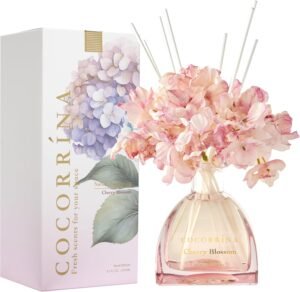In the world of aromatherapy, you constantly hear about essential oils, sometimes as single, pure oils and other times as complex blends. For someone committed to holistic wellness, or a brand like ENO dedicated to therapeutic-grade essential oils, understanding the difference between a single essential oil and a compound (blended) fragrance isn’t just academic—it’s fundamental to delivering effective and enjoyable aromatic experiences. Why blend when you can use a single, pure scent? What are the real advantages, especially given our focus on quality and therapeutic benefits?
Aromatherapy utilizes essential oils for therapeutic purposes, categorized primarily into single fragrances (individual essential oils) and compound fragrances (synergistic blends of multiple essential oils). Single fragrances offer focused benefits tied to specific plant properties, while compound fragrances leverage the principle of synergy, where combined oils enhance each other’s therapeutic effects and create more complex, balanced, and sometimes more pleasant aromatic profiles. The choice between them depends on the desired therapeutic outcome, the complexity of the condition, and the importance of a nuanced aroma.

My journey with ENO has always been about more than just selling scents. It has been about providing truly effective aromatic solutions. It is fascinating to see how a simple blend can sometimes achieve more than a single ingredient, much like building a complex flavor profile in cooking. It is a nuanced understanding that is critical for developing high-quality products for our diverse clients, from brand owners like Lisa to national buyers like Anita. Let’s explore why blending is powerful.
Single Fragrances: The Focused Power of Purity
Single essential oils are the fundamental building blocks of aromatherapy. Each derives from a specific plant source and carries its unique chemical composition and therapeutic properties.
Single essential oils, also known as single fragrances, are pure, unadulterated essential oils extracted from a single botanical species (e.g., lavender, peppermint, or lemon). Their primary advantage lies in their focused therapeutic properties, which are directly attributable to their specific chemical constituents, allowing for precise application in aromatherapy when targeting a singular concern. They offer simplicity, ease of identification of effects, and consistency in their characteristic aroma, making them ideal for specific, targeted therapeutic interventions or for individuals who prefer a straightforward scent experience.

For over 15 years, ENO has sourced vast quantities of high-quality essential oils. We know the unique properties of each one.
1. Targeted Therapeutic Effects 🎯
- Specific Properties: Each single essential oil possesses distinct and well-researched therapeutic properties because of its unique chemical profile. For example, lavender is renowned for its calming and sleep-inducing properties due to constituents like linalool and linalyl acetate. Peppermint is known for relieving headaches and nausea due to menthol.
- Precision: When you have a very specific need, a single essential oil can offer precise, targeted relief. If someone needs help sleeping, lavender is a clear and direct choice. If they need an energizing boost, lemon or peppermint might be chosen.
- Ease of Use: For beginners in aromatherapy, starting with single oils can be less daunting. It is easier to observe and understand the effects of one oil at a time. It also simplifies the process for those who prefer to only use a certain scent.
2. Purity and Simplicity ✨
- Unadulterated: Single essential oils are pure extracts from a single botanical source, containing no other added oils or synthetic compounds. This ensures the integrity of their natural properties.
- Simple Aroma Profile: The scent of a single oil is straightforward and characteristic of its source plant. This is appealing to individuals who prefer uncomplicated fragrances or want to experience the true essence of a particular plant.
- Quality Control: From a manufacturer’s perspective, testing the purity and quality of a single essential oil is more straightforward than testing a complex blend. This allows for rigorous quality assurance, something ENO prides itself on.
3. Versatility for Blending (as an Ingredient) 🎨
- Building Blocks: While "single," these oils are also the essential building blocks for creating compound fragrances. A formulator can choose specific single oils to contribute particular therapeutic effects or aromatic notes to a blend.
- Customization: Experienced users or professional aromatherapists often prefer to keep a wide array of single oils to custom-blend for individual client needs, allowing for highly personalized solutions based on a thorough understanding of each oil’s properties.
However, the "simplicity" of single oils can also be their limitation. They might not always offer the full spectrum of effects needed for more complex issues, or their aroma might be too intense or unidimensional for certain preferences. This is where compound fragrances shine.
Compound Fragrances: The Power of Synergy and Harmony
Compound fragrances, often called essential oil blends, are purposeful mixtures of two or more single essential oils. The art of blending goes beyond simply mixing scents; it is about creating synergy.
Compound fragrances, or essential oil blends, are meticulously crafted combinations of two or more single essential oils designed to achieve enhanced therapeutic efficacy through synergy, create more complex and pleasing aromatic profiles, and offer a balanced and sustained release of fragrance. This approach allows aromatherapists to address multifaceted concerns simultaneously, as the combined actions of different oils can often yield greater benefits than the sum of their individual parts. Blending also enables the creation of unique, appealing scent experiences that cater to diverse preferences and application scenarios.

At ENO, developing new aroma products often involves the creation of unique compound blends. This is where our advanced R&D and international design team comes in. We understand that a truly exceptional product often uses sophisticated blends.
1. Synergy: Enhanced Therapeutic Effects 🤝
- More Than the Sum: The most significant advantage of compound fragrances is synergy. This means that when essential oils are blended, their combined therapeutic effects can be greater than the sum of their individual effects. For instance, a blend of oils known for both calming and uplifting properties might create a unique emotional resilience effect.
- Addressing Complex Issues: Many health and wellness concerns are multifaceted. For example, stress might involve anxiety, sleep disruption, and muscle tension. A compound blend can be formulated to address all these aspects simultaneously (e.g., lavender for anxiety, frankincense for grounding, marjoram for muscle relaxation).
- Broadening Scope: By combining oils, a blend can offer a wider range of therapeutic benefits than any single oil alone. This makes compound blends highly versatile for general wellness or common ailments.
2. Aromatic Complexity and Appeal 🎶
- Balanced Scent Profiles: Skilled blending often results in more sophisticated, well-rounded, and aesthetically pleasing aromas. A good blend achieves harmony, where no one oil dominates, but all contribute to a beautiful, unified scent. This is crucial for products like diffusers and room sprays, where the overall enjoyment of the aroma is key.
- Creating Unique Signatures: Perfumers and aromatherapists use blending to create unique signature scents that evoke specific moods, memories, or even brand identities. This creative aspect is vital for companies like ours, serving clients who need custom fragrance solutions.
- Masking Unpleasant Notes: Some highly therapeutic essential oils (e.g., valerian, spikenard) have less appealing aromas. Blending them with more pleasant oils can make them more palatable for general use without compromising their benefits.
3. Sustained Release and Longevity ⏳
- Note Progression: As discussed with the fragrance pyramid, blends typically contain notes of varying volatilities (top, middle, base). This allows the fragrance to evolve over time, providing a more dynamic and sustained aromatic experience compared to a single oil that might fade quickly.
- Fixative Properties: Some oils, particularly base notes like frankincense, sandalwood, or vetiver, act as natural fixatives, helping to slow down the evaporation of lighter, more volatile oils in the blend. This enhances the longevity and staying power of the overall aroma.
4. Safety and Dilution 💧
- Dilution for Skin Application: While not exclusive to blends, compound fragrances are often formulated with appropriate dilution ratios for safe topical application, making them convenient for consumer use.
- Reducing Sensitization Risk: Sometimes, using smaller concentrations of multiple oils in a blend can be safer than using a high concentration of a single oil that might have potential sensitization risks for some individuals.
Whether it is for the discerning user of therapeutic-grade essential oils or for a global brand looking for unique scent solutions, understanding the distinct benefits of single versus compound fragrances is critical. At ENO, we aim to offer the best of both worlds, providing pure single essential oils and expertly crafted blends that maximize both therapeutic efficacy and aromatic pleasure, all while maintaining our high standards of quality and safety. Our goal is always to deliver unparalleled value to our clients, ensuring their products stand out in a competitive market.





